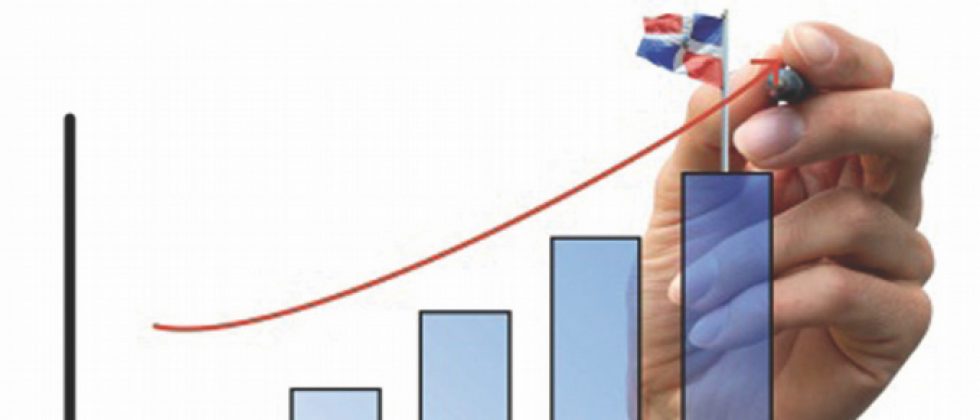news
“The Economy Finds Itself Between a Statistical Rebound and Real Growth”, an article by Dr. Leonel Fernández
May 9, 2022
During the annual spring meetings of the International Monetary Fund and the World Bank, held in Washington, D.C., the Governor of the Central Bank of the Dominican Republic, Héctor Valdez Albizu, delivered keynote remarks regarding the current standing of the Dominican economy.
On the subject at hand, he argued that the economy “had recovered faster than expected, showing an impressive growth of 12.3%, an equivalent of a 4.7% expansion rate in comparison to the production rates of 2019, prior to the pandemic.”
If the information regarding the growth of our economy in 2021 had been offered previously, and if the economic situation truly reflected the terms we have just referred to, we would not have questioned the information presented. We simply would have remained silent on the data presented.
Unfortunately, that was not how it was originally explained. Initially, the information presented was out of context. It was stated, pure and simple, that in 2021 economic growth represented 12.3% of the GDP.
The manner in which it was initially presented, without referring to the profound crash registered in 2020, which was -6.7% of the GDP, nor of the 2019 situation – prior to the pandemic – one believed that our economy had truly expanded by 12.3%.
Those statements were, of course, purely manipulated and an act of intellectual dishonesty. It did not take into consideration that after recovering from such a drastic downfall what was actually occurring in our economy was a statistical rebound.
In the information presented by the Central Bank regarding the country’s economic situation in 2021, the institution deliberately presented truly confusing data. At that time, the Central Bank reported:
“In 2021, GDP growth remained at 4.7% in relation to 2019, reflecting a real reactivation of the Dominican economy rather than a statistical rebound.”
Who, at the time, explained that the 4.7% of the GDP was a statistical rebound?
The 4.7% figure reflected the real growth of the Dominican economy in 2021, and not the 12.3% data. In comparison to the 2020 catastrophe, it does reflect a statistical rebound.
What matters now, however, is that during his intervention in the spring meetings of the multilateral financial organizations, the Governor of the Central Bank definitely clarified the mix-up and settled the differences.
The Return of the Rebound
Just when it was believed that the debate regarding economic growth and the statistical rebound had vanished from the scenario of national public opinion, suddenly the issue has once again reappeared.
In an interview carried out by journalist and friend Katherine Hernández for the local television news channel CDN and newspaper El Caribe with Colombian president Iván Duque, she asked him regarding my opinion on whether the growth of his country and that of the Dominican Republic was real, or just an economic rebound. He answered:
“It is always good to rebound more than the rest of the world. But what has occurred in Colombia and the Dominican Republic has been an important and vigorous movement regarding economic growth, including the recovery of jobs and the reduction of poverty.”
Newspaper El Caribe titled President Duque´s interview: “The Dominican Republic and Colombia Reveal True Growth, Not an Economic Rebound.”
However, it is evident that there is a communication or cognitive gap that distorts the information provided in the article.
Nowhere in the interview does President Duque confirm that the Dominican Republic and Colombia show real growth, and not a rebound. That information, explained in those terms, does not appear in the interview. It is, therefore, a subjective interpretation of the person who wrote the story´s headline.
In response to the question asked, the Colombian president, in an intelligent manner and with a touch of an ironic tone, not only did not rule out that the economies of the D.R. and Colombia had rebounded but implicitly recognized the phenomenon to express that “it is always good to rebound more than the rest of the world.”
Moreover, it was not this writer who supported the mythological thesis of economic growth through statistical rebound. The supporter of this argument was none other than the Economic Commission for Latin America and the Caribbean (ECLAC), in a preliminary report issued regarding the standing of the regional economies during 2020.
ECLAC´s Position
In that report, the regional United Nations organization on economic issues explained that the 2020 contraction provoked by the lockdown brought on by the pandemic was -6.7% of the GDP, the worst number registered in more than 100 years.
Faced with such a tragedy, the governments of Latin America reacted by introducing monetary and expansive fiscal policies. That led the ECLAC to maintain its theory that “there will be a positive GDP growth in 2021, which will fundamentally reflect a statistical rebound …”
Why would this expected GDP growth in 2021 be a reflection of a statistical rebound?
The answer to that question is answered, with all the necessary intellectual authority and background, by Alicia Bárcena who, until recently, was ECLAC´s Executive Director. She stated:
“The dynamics of growth in the region this year (2021), although it resorts to improvements in external conditions and the growing opening of economies, is mainly explained by a very low comparison base, a product of the 2020 crash, which was -6.7%, the largest recorded since 1900.”
Moreover, to clear further doubts or confusion regarding her arguments, she added:
“In all of Latin America, the growth rate is explained through statistical effects. In the case of South America, we can determine that of the 5.9% projected growth for 2021, 70% of that number is due to a dragging effect, while only 30 percent of the data is genuine growth.”
In relation to Colombia, ECLAC had projected that this Andean and Caribbean nation would experience a 7.5% growth. However, there are six points, or about 80 percent of that proportion, which is provoked by statistical drag.
And indeed, this is the way it is. The statistical rebound, a direct result of the economic crash, will always be different from the real, organic and genuine growth that it may experience.





